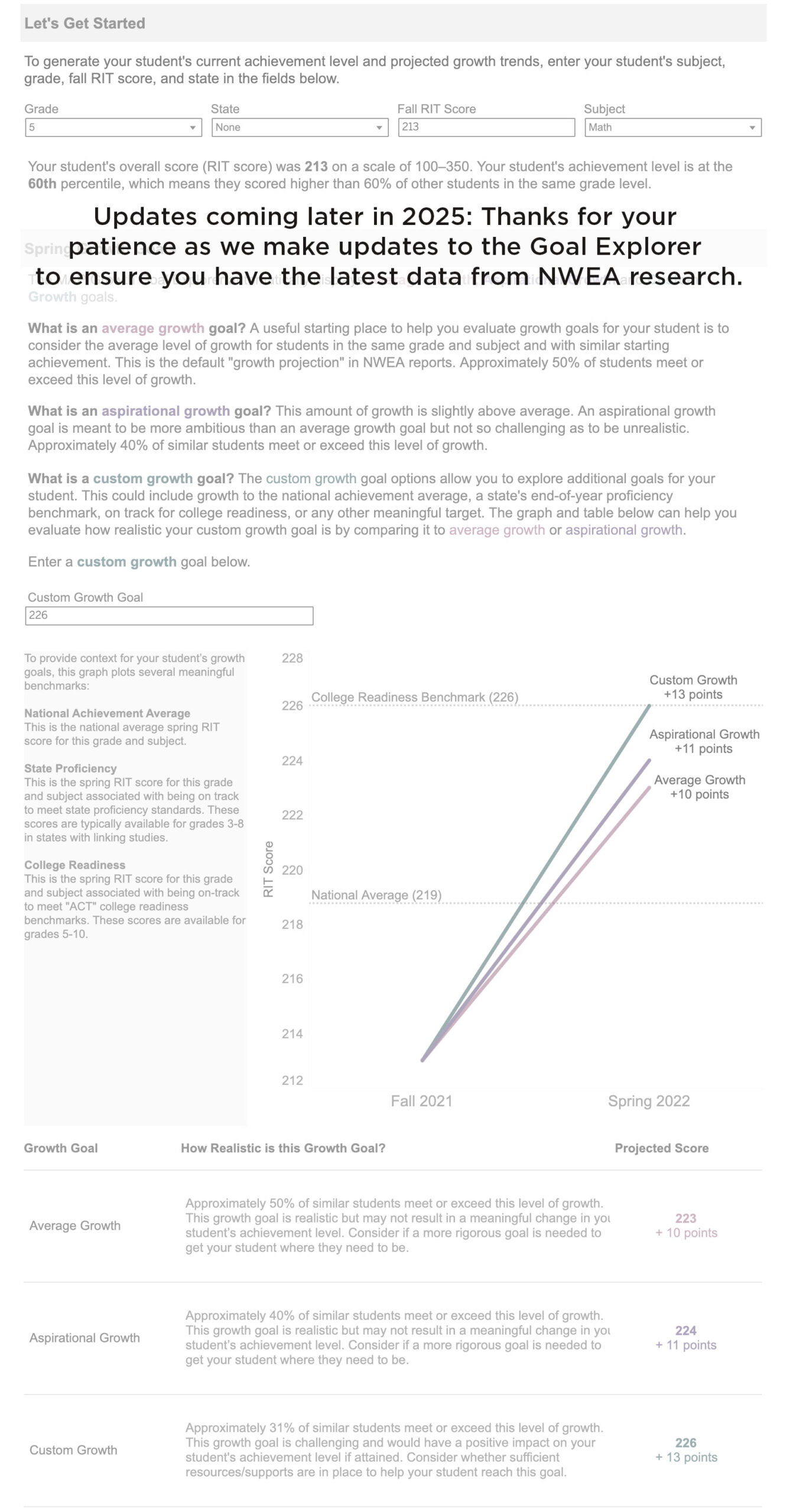Put your RIT score to use with the MAP Growth Goal Explorer
All students deserve the opportunity to work toward meaningful and realistic academic goals. But goal setting can be challenging, and different students need different goals. By using the MAP® Growth™ RIT score, the Goal Explorer will help you determine the right goals for a student.
Your student will receive a RIT score for each subject. The MAP Growth RIT score indicates one thing: the difficulty level of questions a student got right about 50% of the time. Because MAP Growth is a computer-adaptive test, it determines this by giving the student harder and easier questions as the test goes on based on how the student performs. Get a question right, the next question is harder. Get it wrong, and the next question is easier.
The result is a score that shows the learning level of the student right now. This score does not indicate that a student got a certain number of questions right, nor does it explain what specific skills they have mastered.
The MAP Growth Goal Explorer will use your student’s RIT score to show you their achievement level compared to other students in their grade. The tool will then show you average and aspirational growth goals for students like yours.
The MAP Growth Goal Explorer simplifies the goal-setting process by helping students, families, and educators identify meaningful student goals that, if attained, would be significant accomplishments for the student. This tool will help you determine how realistic a goal is, with the understanding that the most useful goals are rigorous, challenging, and achievable.
This tool will help you determine how realistic a goal is, with the understanding that the most useful goals are rigorous and challenging but do not set students up to fail. The MAP Growth Goal Explorer should be used to support conversations between teachers, families, and students to establish goals that strike a balance between what is meaningful and what is realistic.
Find out what your RIT score can tell you about your growth & achievement
MAP Growth Goal Explorer (coming soon)

What to do next?
Setting a roadmap or action plan to achieve the chosen goal helps keep students on track. There is no set approach that is appropriate for all students, but the following steps provide a framework:
- Collaborate with students to set growth goals that they are motivated to achieve.
- Establish concrete activities that students understand and can pursue autonomously to achieve the goal. The Student Profile or Class Report provide information about specific areas to focus on as well as areas of greater mastery to celebrate and build upon.
- Check in with students regularly to monitor motivation and progress towards execution of the goal.
Definitions
A computer adaptive assessment used to measure your student’s achievement level and growth over time. Teachers can use MAP Growth results to differentiate instruction, identify student strengths and weaknesses, and tailor classroom lessons to meet your student’s needs.
The overall score for a subject based on a Rasch unit (RIT) scale that indicates how your child performed in a subject area.
Achievement: How well a student has learned skills in a subject compared to similar students nationwide.
Growth: A measure of a student’s progress over the year.
The percentage of students in the US population for this grade and subject area that this student’s score equaled or exceeded.
Similar students are those with approximately the same starting RIT score, the same number of weeks of instruction, and in the same grade and subject area.